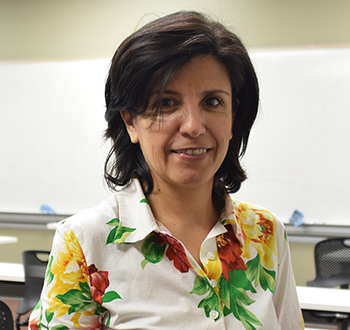
Sandra Gruner-Domic
Born in Bolivia, educated in Germany and now residing in Los Angeles, Sandra Gruner-Domic brings her expertise in Latin American migration and social anthropology to her role as one of the guiding forces of USC Shoah Foundation’s Guatemalan Genocide testimony collection.
Gruner-Domic received her PhD in social anthropology from Humboldt University in Berlin and has lectured in sociology and gender studies at California State University Long Beach and USC. She has researched, taught and published works on migration, race and ethnic relations, process of representation and identity in transnational context, and global citizenship.
Though the main focus of her research had not typically been on genocide, Gruner-Domic became more interested in the topic when she moved to Los Angeles in 2008, which is home to a large population of Central American immigrants, many of whom fled mass violence in their home countries.
“I realized, looking at the immigrants and many of them being refugees, people were not so aware about [the genocide],” Gruner-Domic said. “Even though there was some research on it, it wasn’t related to the community itself. That’s why I realized that it could be a topic for me to look at.”
Gruner-Domic accompanied USC Shoah Foundation staff members on its first research trip to Guatemala in 2014. The group met with its new partner, Fundación Antropología Forense de Guatemala (FAFG) in order to learn more about FAFG’s work recovering the bodies of victims of the Guatemalan Genocide that have been missing for over 35 years, and to train its staff on how to film video testimonies of survivors according to USC Shoah Foundation’s methodology.
Now that testimonies recorded by FAFG are flowing in to USC Shoah Foundation, Gruner-Domic is working to index and integrate them into the Visual History Archive. Along with collections department staff, she is developing a new vocabulary of indexing terms for the collection. These terms include geographic locations, historical figures, and even types of experiences that have not been indexed in the archive’s other collections.
She said that watching the testimonies has been eye-opening. She has been particularly struck by the similarities of the experiences of people in rural and city areas: Whether they were farmers in remote villages or college students, they were all persecuted for simply being an undesirable ethnicity, religion or class, or daring to demand more from their government.
“They were considered to be dangerous because of their involvement in the transformation of their country, and for that reason they were targeted,” she said. “They only wanted to be part of Guatemala.”
When the first 10 Guatemalan testimonies were published in the Visual History Archive last year, IWitness debuted Guatemalan Genocide content for students, including several activities, full-length testimonies, and testimony clips. Gruner-Domic said it’s been inspiring to see how Central Americans are responding to the stories of Guatemalan survivors through IWitness.
“They can identify with it, and they can project other forms of discrimination in their countries,” Gruner-Domic said. “It’s motivating them to discuss why we discriminate, why we are intolerant. That is a case that resonates with them because it’s their people. Through this other form of identification it becomes more personal and they’re more invested in it.”
By recording testimonies of Guatemalan Genocide survivors and making them available to the public, USC Shoah Foundation is helping to bring much-needed visibility to this “silent genocide,” Gruner-Domic said. Even though it happened so close to the United States a mere 35 years ago, few people today know anything about it, and even the Guatemalan community is hesitant to discuss the conflict openly.
“If you ask around, everyone knows about the Holocaust, but no one knows about Guatemala,” she said. “How quick we can ignore something that is very close to us.”